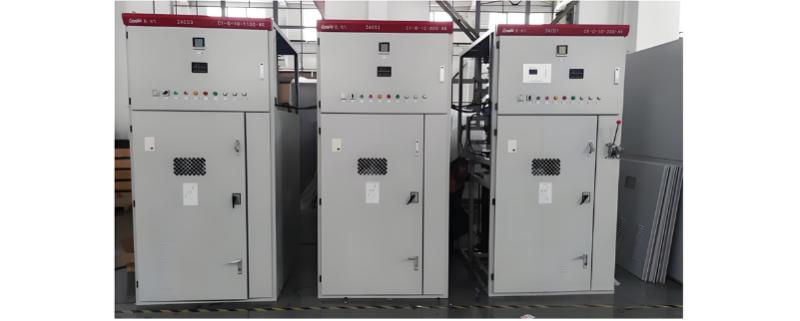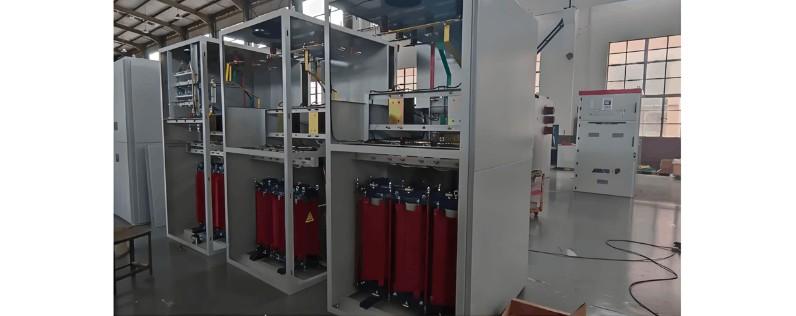Ang 10kV high-voltage reactive power compensation device ay isang mahalagang at hindi maaaring mawala na komponente sa modernong mga sistema ng kuryente. Sa pamamagitan ng pagbibigay o pag-absorb ng reactive power, ito ay epektibong nasasolusyonan ang mga isyung tulad ng mababang power factor, mataas na line losses, at mga pagbabago sa tensyon na dulot ng demand para sa reactive power, naglalaro ng pangunahing papel sa pagpapabuti ng ekonomiya, seguridad, at kalidad ng kuryente ng grid operation. Ang high-voltage 10kV reactive power compensation ay isang kritikal na aparato upang masiguro ang ligtas at ekonomikal na operasyon ng grid.
Ang pag-unawa sa kanyang prinsipyong paggana ay ang pundamento para sa pagmamanila, habang ang mahigpit na pagpapatupad ng regular na plano ng pagmamanila na nakatuon sa preventive testing at condition monitoring—na palaging binibigyan ng prayoridad ang seguridad—ay ang pundamental na tagapagtanggol para masiguruhin ang matagal na maasahan na operasyon. Ang gawain ng pagmamanila ay dapat isagawa ng may kakayanang at may karanasan na mga tao ayon sa naitatag na proseso. Ang sumusunod ay isang detalyadong paliwanag ng prinsipyong paggana at mga pangunahing aspeto ng pagmamanila ng 10kV high-voltage reactive power compensation systems.
1. Prinsipyong Paggana ng 10kV High-Voltage Reactive Power Compensation
Pangunahing Layunin: Pagpapabuti ng power factor ng grid, pagbawas ng line losses, pagsisiguro ng sistema ng tensyon, at pagpapabuti ng kalidad ng suplay ng kuryente.
1.1 Prinsipyo ng Kompenstasyon
Pinagmulan ng Reactive Power: Ang mga inductive loads sa grid (halimbawa, motors, transformers) ay nangangailangan ng pagtatatag ng magnetic field sa panahon ng operasyon, na kumukonsumo ng lagging reactive power (Q).
Paraan ng Kompenstasyon: Ang mga capacitor banks ay konektado sa parallel, na nagbibigay ng leading capacitive reactive power (Qc) upang makabalansa ang inductive reactive power (Ql).
Resulta: Ang kabuuang reactive power (Q) na kinakailangan ng sistema ay nababawasan, ang power factor (Cosφ = P / S) ay pinapabuti, at ang apparent power (S) ay binababa.
1.2 Mga Komponente ng Aparato ng Kompenstasyon
High-Voltage Shunt Capacitor Bank: Ang pangunahing komponente na nagbibigay ng capacitive reactive power. Karaniwang binubuo ng maraming capacitor units na konektado sa series at parallel upang mapunan ang 10kV voltage at ang kinakailangang kapasidad.
Series Reactor:
Current-Limiting Reactor: Nakakawala ng inrush current sa sandaling nagbabago ang capacitor (karaniwang 5–20 beses ang rated current), nagprotekta ng mga capacitors at switching equipment.
Filter Reactor: Nagtataguyod ng LC tuned circuit kasama ang capacitor (karaniwang naka-tune sa ilalim ng ika-5, ika-7, o tiyak na harmonic frequency), nagbabawas ng harmonic currents na pumasok sa capacitor, nagpapahinto ng harmonic amplification at resonance, kaya nagprotekta ng capacitor.
High-Voltage Switching Equipment:
Vacuum Contactor o Vacuum Circuit Breaker: Ginagamit upang mag-switch ng capacitor banks. Ang vacuum contactors ay mas karaniwan at angkop para sa madalas na operasyon.
Isolating Switch / Grounding Switch: Ginagamit sa panahon ng pagmamanila upang i-isolate ang pinagmulan ng kuryente at siguruhin ang reliable grounding para sa seguridad.
Discharge Device:
Discharge Coil o Discharge Resistor: Pagkatapos na i-disconnect ang capacitor bank, ito ay mabilis na nag-discharge ng naka-imbak na charge sa terminal ng capacitor (karaniwang kinakailangan na bawasan ang residual voltage sa ilalim ng 50V sa loob ng 5 segundo), nagpapasiya sa seguridad sa panahon ng pagmamanila. Ang discharge coils ay mas karaniwan.
Protection Devices:
Fuse: Nagprotekta ng individual na capacitors laban sa internal faults (expulsion-type fuse).
Relay Protection: Kasama ang overcurrent protection (phase-to-phase short circuit), unbalance protection (internal capacitor element breakdown o fuse blowout), overvoltage protection, undervoltage protection, harmonic overlimit protection, open-delta voltage protection, atbp.
Measurement and Control Devices:
Controller: Patuloy na nagsusuri ng sistema ng tensyon, kuryente, power factor, harmonic current, harmonic voltage distortion rate, at iba pang parametres. Automatic control ng switching ng capacitor banks ayon sa preset strategies (halimbawa, target power factor, target voltage, harmonic over-limit protection, time-based programs).
Current Transformer (CT), Voltage Transformer (PT): Nagbibigay ng signals para sa measurement at protection.

1.3 Proseso ng Operasyon
Monitoring: Ang controller patuloy na nagsusuri ng mga parameter tulad ng power factor, tensyon, at demand para sa reactive power ng grid.
Desisyon: Kapag ang power factor bumaba sa isang itinakdang lower limit (halimbawa, 0.9 lagging), o kapag ang sistema nangangailangan ng karagdagang reactive power, ang controller ay nagbibigay ng energizing command.
Energizing: Ang control circuit nagdrdrive ng vacuum contactor upang isara, na konektado ang capacitor bank (karaniwang sa pamamagitan ng series reactor) sa parallel sa 10kV busbar.
Kompenstasyon: Ang capacitor bank nagbibigay ng capacitive reactive power sa sistema, na nagbabawas ng bahagi ng inductive reactive power, nagpapabuti ng power factor, at nagbibigay ng suporta sa tensyon.
De-energizing: Kapag ang power factor lumampas sa isang itinakdang upper limit (halimbawa, 0.98 leading, na maaaring maging sanhi ng overcompensation), o kapag ang tensyon ng sistema ay masyadong mataas, o kapag ang load reduction ay nagresulta sa pagbawas ng demand para sa reactive power, ang controller ay nagbibigay ng de-energizing command, ang vacuum contactor ay binuksan, at ang capacitor bank ay inalis mula sa serbisyo.
Discharge: Pagkatapos na i-disconnect ang capacitor bank, ang discharge device (discharge coil) ay awtomatikong gumagana, mabilis na nag-discharge ng naka-imbak na enerhiya.
2. Pagmamanila ng 10kV High-Voltage Reactive Power Compensation Devices
Pangunahing Layunin: Masiguruhin ang ligtas, maasahan, at epektibong operasyon, at palawakin ang buhay ng mga aparato.
2.1 Araw-araw na Pagsisiyasat
Visual Inspection: Suriin ang capacitor casing para sa bulging, oil leakage, rust, o paint peeling; suriin ang bushings para sa cracks, contamination, o flashover traces; suriin ang mga connection points para sa looseness, overheating (infrared thermography), o discoloration.
Operating Sound: Ipaglaban ang abnormal vibration o noise mula sa reactors, discharge coils, o capacitors (halimbawa, ang abnormally increased "humming" sound ay maaaring isang indikasyon ng internal looseness).
Instrument Indication: Suriin kung normal ang mga indication ng voltmeters, ammeters, power factor meters, at reactive power meters, at ikumpara sa mga display values ng controller.
Environmental Check: Suriin ang indoor ventilation, ambient temperature, at humidity upang masiguruhin na sila ay nasa pinahihintulutang limit; suriin ang dust accumulation o signs ng small animal intrusion; suriin kung buo ang mga fences at labels.
Protection Signals: Suriin kung mayroong alarm o trip signals mula sa mga protection devices.
2.2 Regular na Pagmamanila (Karaniwang Bawat Anim na Buwan hanggang Isang Taon)
Power-Down Cleaning: Thoroughly remove dust and dirt from the surfaces of capacitor casings, bushings, insulators, busbars, frames, reactors, and switchgear (using dry, lint-free cloths or special tools, avoiding insulation damage). (Mahalaga! Ang paglilinis ng high-voltage equipment ay dapat gawin pagkatapos ng power-off, voltage testing, at grounding!)
Tightening Connections: Suriin at ikapit ang lahat ng electrical connection bolts (busbar connections, capacitor terminal connections, grounding wires, etc.) upang masiguruhin ang maayos na contact at maiwasan ang overheating. Operate according to specified torque.
Capacitor Testing:
Capacitance Measurement: Gumamit ng dedicated capacitance bridge upang sukatin ang kabuuang capacitance ng bawat phase o bawat branch (kung applicable), at ikumpara sa nameplate values o historical data. Kung ang deviation ay lumampas sa ±5% o nagpakita ng significant change (lalo na decrease), ito ay nangangailangan ng malapit na pag-aaral, posibleng nagpapahiwatig ng internal component damage. Ang capacitance value ng single capacitor ay hindi dapat lumampas sa -5% to +10% ng rated value.
Insulation Resistance Test: Sukatin ang insulation resistance sa pagitan ng poles at sa pagitan ng pole at case (using a 2500V megohmmeter), na dapat tumugon sa regulatory requirements (karaniwan, inter-pole insulation resistance dapat maging napakataas, pole-to-case insulation resistance > 1000MΩ). Dapat fully discharged before and after testing!
Dissipation Factor (tanδ) Measurement: Maaaring gawin kung ang kondisyon ay pinahihintulutan, na mas sensitibo sa pag-reflect ng internal capacitor insulation moisture o deterioration. Dapat hindi magpakita ng significant increase compared to factory or previous measurement values.
Reactor Inspection:
Suriin ang coil appearance para sa overheating, discoloration, insulation aging, o damage.
Suriin kung loose ang core (if present) fasteners.
Sukatin ang winding DC resistance, na hindi dapat magpakita ng significant difference compared to factory or previous values (considering temperature influence).
Sukatin ang insulation resistance.
Discharge Device Check:
Suriin ang discharge coil appearance at wiring.
Verify discharge performance (under safety regulation permission, simulate operation to verify residual voltage drop speed).
Switching Equipment Maintenance:
Suriin ang vacuum interrupter appearance.
Suriin kung ang operating mechanism operates flexibly and reliably; apply appropriate lubricant to lubrication points.
Sukatin ang main circuit contact resistance.
Perform mechanical characteristic tests (opening/closing time, synchronism, bounce, stroke, etc.).
Protection Device Calibration: Calibrate settings and perform transmission tests for overcurrent, unbalance, overvoltage, undervoltage, etc., according to regulations to ensure accurate and reliable operation. Suriin ang fuse appearance at indicator status.
Controller Check: Suriin kung normal ang display, buttons, at communication; verify sampling accuracy (compare voltage, current, power factor, etc., with standard meter); check if switching logic is correct.

2.3 Espesyal na Pagmamanila
Harmonic Environment: Kung ang sistema ay may seryosong harmonics, palakasin ang pag-monitor ng temperature rise ng capacitors at reactors (infrared thermography), gawin ang regular na harmonic tests, masiguruhin ang reasonable tuning point settings upang iwasan ang resonance. Magdagdag ng filtering devices kung kinakailangan.
Frequent Switching: Palakasin ang pagsisiyasat ng contact wear ng vacuum contactors/circuit breakers, shorten their maintenance cycle.
After Faults: Pagkatapos ng protection operation (especially fuse blowout or unbalance protection operation), ang dahilan ay dapat lubusang mailarawan, palitan ang nasiraang mga komponente, at tapusin ang comprehensive inspection at testing bago muling i-energize.
2.4 Safety Precautions (Pinakamahalaga!)
Mahigpit na ipatupad ang "Two Tickets and Three Systems": Work Ticket, Operation Ticket; Shift Handover System, Patrol Inspection System, Equipment Periodic Testing and Rotation System.
Power-Off, Voltage Test, Grounding: Bago anumang gawain ng pagmamanila, ang pinagmulan ng kuryente ay dapat maasahan na idisconnect (kasama ang posible na back-feeding mula sa PT secondary side), gamitin ang qualified voltage tester upang kumpirmahin ang absence ng voltage, at i-install ang grounding wires sa parehong dulo ng lugar ng trabaho. Ang capacitor bank ay dapat fully discharged using a dedicated grounding rod at grounded bago ma-contact!
Dedicated Supervisor: Ang operasyon at pagmamanila ng high-voltage equipment ay dapat may dedicated supervisor.
Use Qualified Tools and Protection: Gamitin ang mga tool na may qualified insulation rating, maglagay ng insulating gloves, insulating boots, at iba pang safety protective equipment.
Residual Voltage Awareness: Kahit na pagkatapos ng discharge, gamitin ang grounding rod upang muli na ishort-circuit ang capacitor terminals bago ma-contact.
2.5 Record Keeping and Analysis
Record data from each inspection, maintenance, and test in detail (capacitance value, insulation resistance, temperature, protection action information, etc.).
Establish equipment files, perform trend analysis, and promptly identify potential defects.
Record abnormal conditions and handling processes.
3. Reference for Key Maintenance Intervals
Daily Inspection: Daily or weekly (depending on importance and operating environment).
Periodic Cleaning and Inspection (without power-off): Monthly or quarterly.
Periodic Maintenance (with power-off): Once to twice a year (combined with preventive testing).
Capacitor Capacitance/Insulation Resistance Measurement: Conducted during power-off maintenance; once within one year of commissioning, then once every 1–2 years.
Protection Device Calibration: Once a year.
Switching Equipment Characteristic Test: Combined with power-off maintenance, once every 1–2 years or when operation count reaches a certain value.
4. Notes
Ambient Temperature: The operating ambient temperature of capacitors must not exceed the specified upper limit (typically -40°C ~ +45°C), avoid direct sunlight.
Overvoltage: Capacitors can operate long-term at 1.1 times the rated voltage; avoid prolonged overvoltage operation.
Overcurrent: Capacitors can operate long-term at 1.3 times the rated current (considering harmonic and overvoltage effects).
Harmonics: Harmonics are one of the main causes of capacitor damage. The system harmonic background must be considered during design, and the reactor ratio configured reasonably. Strengthen harmonic monitoring during operation.
























